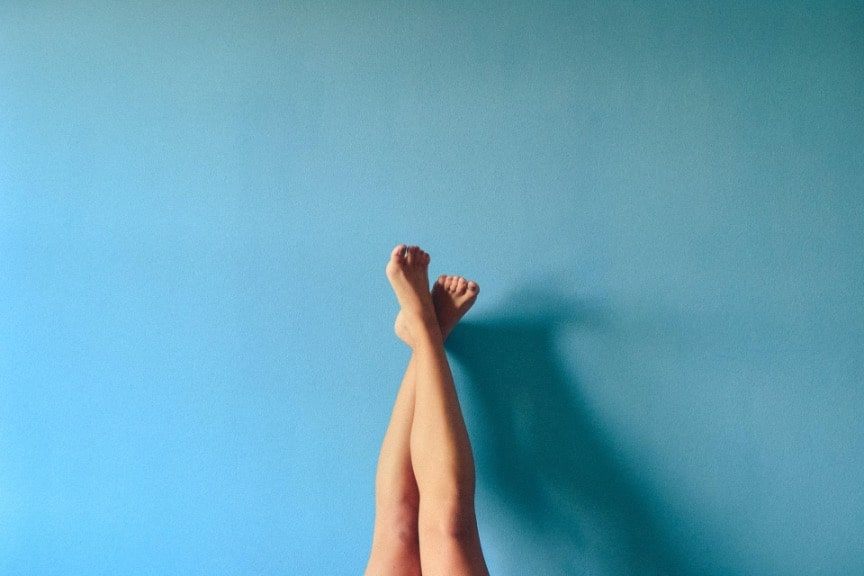A venule is a small blood vessel that forms where capillaries meet. These tiny veins can weaken and widen, forming spiderweb-like patterns on the skin.
Doctors don’t know why some people develop spider veins while others don’t. Some people might be more at risk due to:
- Genetics
- Pregnancy and other hormonal changes
- Being female
- Work demanding extensive sitting or standing
- Sun damage
- Obesity
- Smoking
Reduce risk of spider veins by quitting smoking, losing weight, practicing sun protection, and by moving around during the workday.
Spider veins occur when aging causes wear and tear on the circulatory system. Spider veins are common among older adults. One study found 79 percent of men and 88 percent of women have spider veins. Almost all of those affected experienced mild or no symptoms. Spider veins are seldom painful or dangerous to your health. They can affect someone’s self-esteem, especially in severe cases.
Factors include genetic causes. Few people avoid spider veins altogether. T+
esearch supports several lifestyle changes that can promote great vein health, and reduce your risk of spider veins.
How to reduce the appearance of spider veins
There are several medical treatments available that may improve the look of spider veins, including:
- Sclerotherapy, a procedure that uses an intravenous solution to fade spider veins
- Veinwave, which uses microwave energy to target hard-to-treat areas
- Laser therapy, or heating the vessels to break down blood clots
Insurance policies seldom cover these procedures. Removal is considered a voluntary cosmetic procedure.
However, some at-home approaches can help people keep their circulatory system running smoothly. Maintaining stronger veins may help prevent spider veins from forming, reduce their appearance, and ensure lasting results from medical treatment.
Exercises to prevent spider veins
Standing or sitting in one position causes blood to pool in your ankles and increases pressure on the veins in your legs. Chefs, hairdressers, surgeons, and others in jobs that involve a lot of standing may be more likely to develop spider veins. Jobs that require sitting at a desk are also raise your risk.
Exercise improves circulation. Almost any activity that gets your blood moving helps strengthen the circulatory system, keeping veins flexible and blood flowing back to your heart. Regular exercise also lowers your risk of obesity — a major risk factor for venous disorders like spider veins.
Low-impact cardiovascular exercises like walking, swimming, and cycling engage your calf muscles and promote healthy blood flow. Doctors also recommend targeted strength-training exercises such as:
- Standing calf raises
- Lunges
- Leg lifts
- Bicycle legs
Foods that prevent spider veins
Nutrition has an impact on the health of your circulatory system, too. There are some dietary changes that may promote better vein function and keep your blood flowing properly, reducing pockets of pressure that cause spider veins.
Get enough fiber
Evidence shows a relationship between a low-fiber diet and poor vein health, including the appearance of spider veins. When fiber’s missing from your diet, pressure can increase in our gastrointestinal tract, putting extra strain on the veins in your legs.
Great sources of fiber include:
- Legumes like lentils and black beans
- Nuts like almonds and pistachios
- Grains like barley and oatmeal
- Fruit like apples, citrus fruits, and pears
Lower your salt intake
Sodium helps control your body’s fluid balance. But in excess, it can increase your blood pressure and damage vessel walls.
High pressure and weakened veins can provoke or worsen spider veins. The American Heart Association recommends eating no more than 2,300 milligrams of sodium per day — no more than 1,500 milligrams if you’ve been diagnosed with high blood pressure.
Fuel up on flavonoid-rich foods
Studies link plant compounds called flavonoids with improved circulatory health and stronger, more flexible blood vessel walls. The following fruits have especially high levels of flavonoids:
- Cherries
- Blueberries
- Red grapes
- Apples
- Apricots
Drink more water
Dehydration thickens your blood, making circulation more difficult. This can increase your risk of clots and venous conditions like deep vein thrombosis, varicose veins, and spider veins.
To promote great circulation, the American Heart Association recommends that men drink 3.7 liters and women 2.7 liters of water daily.
Compression socks to prevent spider veins
Spider veins form because valves in your veins get damaged. This makes it difficult to pump blood back toward your heart against gravity. Instead, blood starts to pool in your legs. The veins under the skin form spider veins.
Compression socks or stockings may prevent this build-up. Their tight elastic fabric puts pressure on your legs to help weakened vein valves and return blood back to your heart.
Compression socks are most effective when you put them on first thing in the morning. When we lie down vein valves in our lower body don’t have to fight against gravity. Putting on compression socks then helps prevent blood pooling when we stand up, supporting stronger circulation.
Compression socks are available in mild, moderate, firm, and extra firm compression levels. Researchers recommend mild compression socks for people who sit or stand for long intervals or during extended travel. Moderate compression socks are more effective for people who have spider veins. Talk to your doctor about which option is best for you.
Get rid of spider veins for good
To keep your veins in great shape, maintain a healthy diet, a regular exercise routine, and use compression socks. All these can help prevent spider veins. they can also keep existing spider veins from worsening. But only medical intervention can eliminate spider veins already visible on your skin. Our vein specialists at Medicus Veincare are skilled in multiple techniques that target difficult-to-treat spider veins, ensuring each patient’s plan is unique to their needs. Book a free consultation with one of our experts to discuss which options are best for you.





